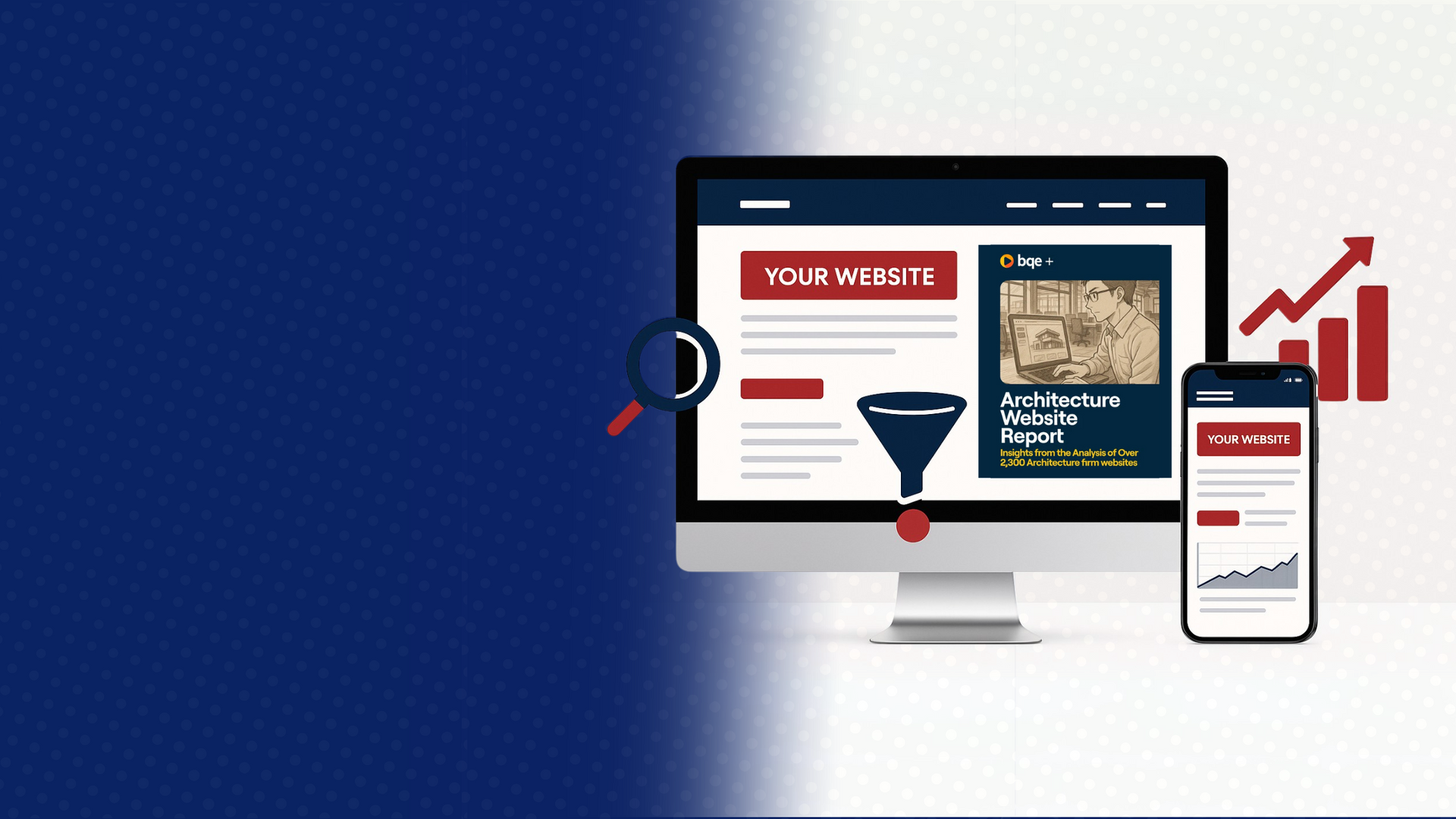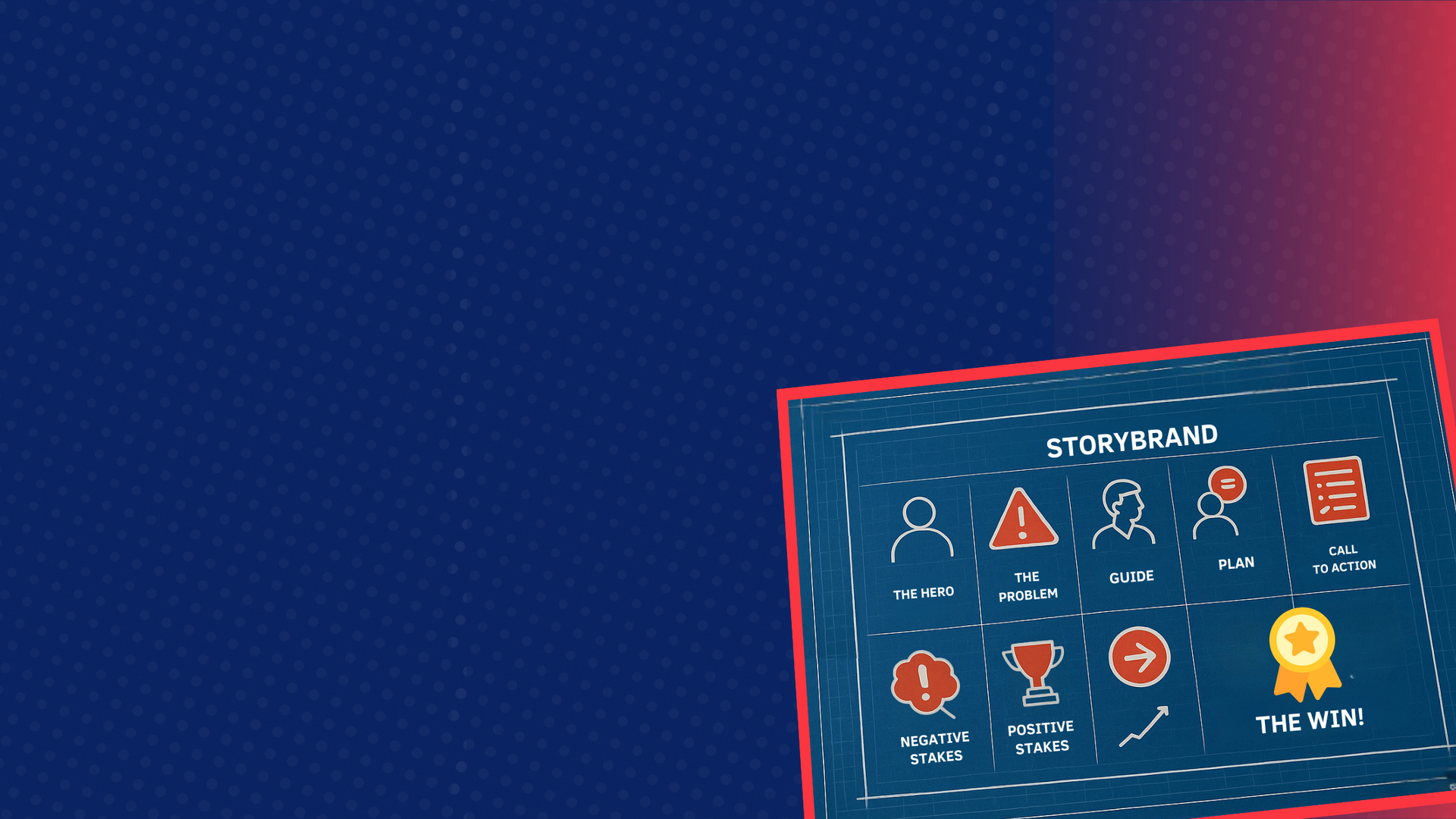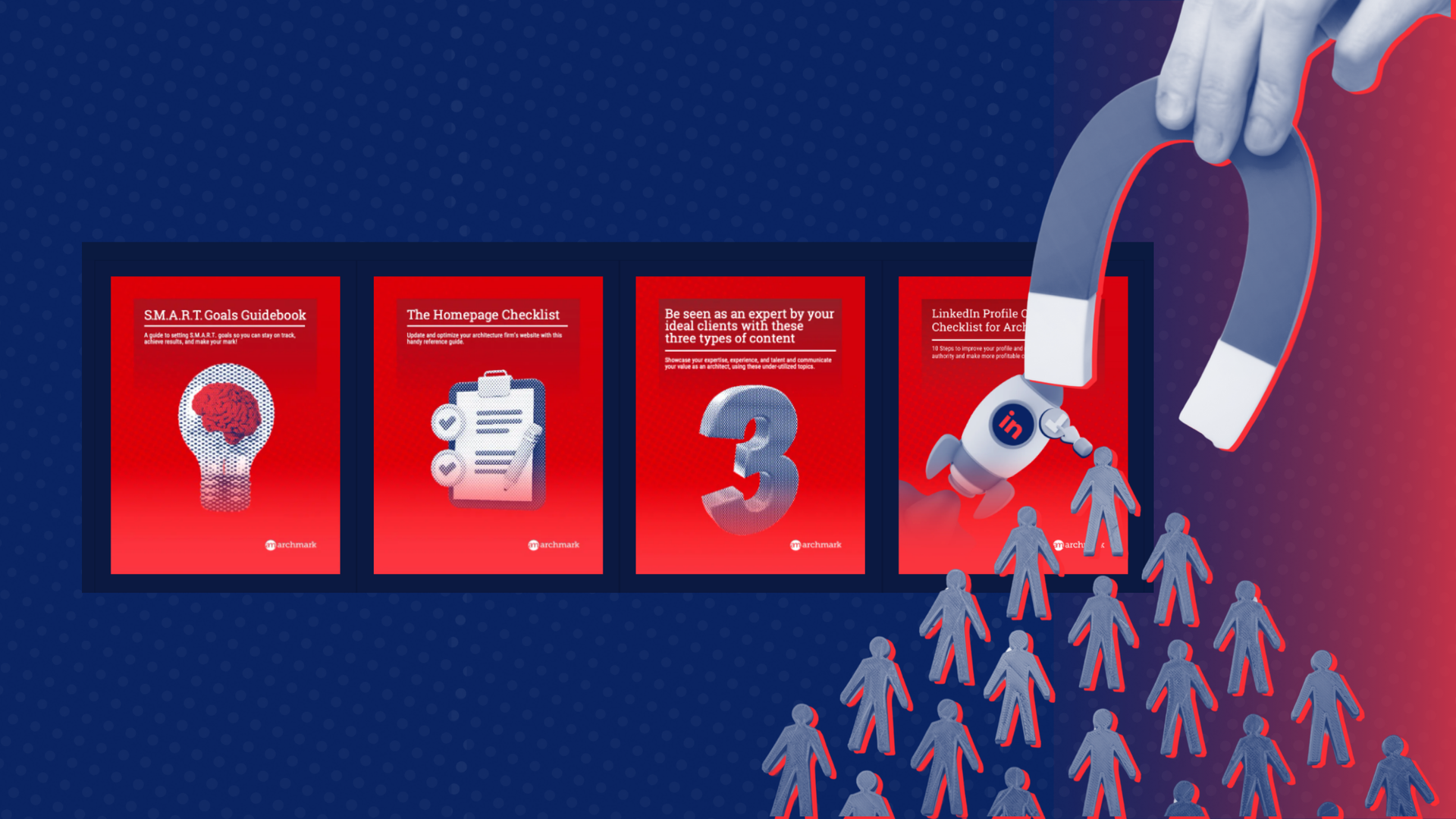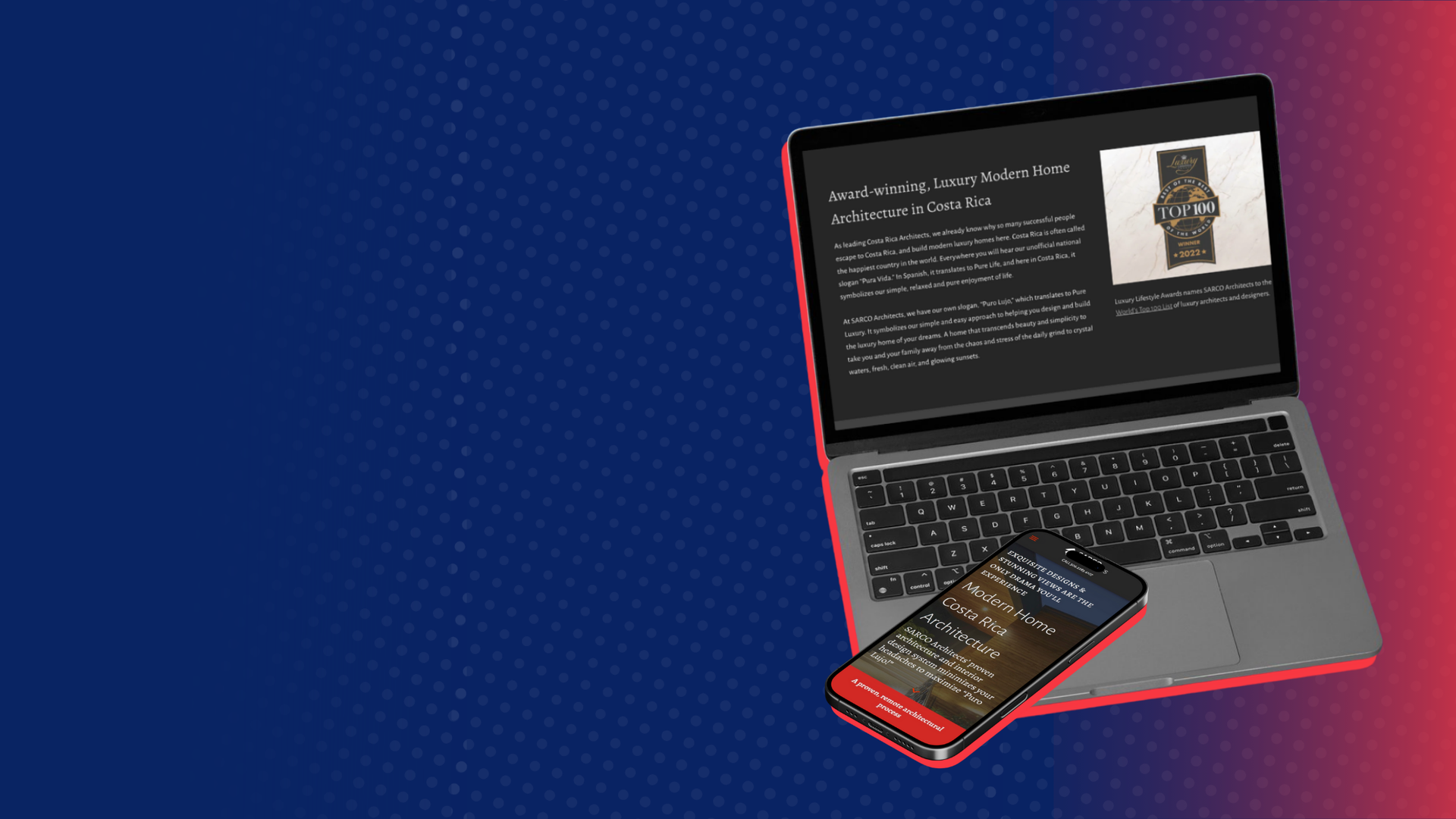Three Questions Every Architecture Firm Client Asks (And How Your Website Should Answer Them)
Let's talk about the elephant in every architecture firm's conference room: your website isn't working.
You know it. I know it. That prospective client who just ghosted you after visiting your site? They definitely know it.
Here's the thing - it's not because your portfolio isn't stunning (it probably is). It's not because you lack talent (you don't). It's because your website is answering all the wrong questions while ignoring the three that actually matter.
Every potential client who lands on your website has exactly three questions. Answer them all, and you've got a lead. Fail to answer even one, and you've got another bounce rate statistic.
The Three Questions That Actually Matter
Before someone hires you to design their $5 million home or their company's new headquarters, they need to know three things:
- Can you do this? (Capability)
- Have you done this? (Credibility)
- Will I enjoy working with you? (Chemistry)
Simple, right?
Yet according to our recent analysis of 2,305 architecture firm websites, 87% of firms have insufficient content to answer even the first question. Nearly 36% hide their contact information entirely - essentially telling clients "we're not sure we want to work with you" before the conversation even starts.
(Yes, you read that right. More than a third of architecture firms are playing hard to get with their phone numbers. Bold strategy.)
Why Most Architecture Websites Fail the Test
Here's what typically happens when a potential client visits your site:
They land on your homepage - a beautiful, minimalist gallery of images with maybe 50 words of text (or if they're lucky, the median of 160 words). No clear statement of what you do, who you serve, or why you're different.
The visitor thinks, "Pretty pictures, but can they handle MY project?"
They click to your portfolio - more gorgeous images, this time with project names like "Smith Residence" or "Corporate Office Building #3."
- No context.
- No challenges overcome.
- No budgets.
- No timelines.
The visitor wonders, "But have they done anything like what I need?"
They hunt for your About page (because it's buried in the footer) - they find a formal bio written in third person that sounds like it was copied from an award submission circa 2015. Nothing about your process, your values, or what it's actually like to work with you. The visitor leaves, thinking, "These people seem... fine, I guess?"
Game over. They're on to the next firm's website.
The Recognition → Reputation → Relationships Framework

Recognition: Answering "Can You Do This?"
Recognition isn't about being famous. It's about being immediately recognizable as the right firm for the job. When someone lands on your website, they should know within 10 seconds:
- What types of projects you excel at
- What geography you serve
- What makes you different from the other 112,000 architecture firms in the U.S.
Yet most architecture websites fail this basic test.
Remember that stat about 87% having insufficient content? That's not just a number - that's 87% of firms assuming visitors will somehow divine their capabilities through telepathy and pretty pictures.
StudioZArch.com gets this right. Within seconds of landing on their site, you know they're residential specialists who focus on creating dream homes. Their homepage doesn't just show pretty pictures - it tells you exactly what kind of homes they design, for what kind of clients, solving what kind of challenges.
Your homepage needs this. Your service pages need this. Hell, your contact page needs this. Because you never know where someone will land first.

Reputation: Answering "Have You Done This?"

Relationships: Answering "Will I Enjoy Working With You?"
The Beautiful Truth About The Three Questions
The Residential Reality Check
How to Fix Your Website (Without Starting Over)
Quick Fixes for Capability (Recognition):
- Add a clear headline to your homepage that states what you do and for whom
- Write 300-500 words of homepage copy that explains your services and approach
- Add a services page that details your capabilities in specific project types
- Include your geographic service area prominently
- Use plain English to describe your services (save the archispeak for your peers)
Quick Fixes for Credibility (Reputation):
- Expand your project descriptions to include challenges, solutions, and outcomes
- Add metrics to your case studies (budgets, timelines, square footage, energy performance)
- Start a blog addressing common client questions and concerns
- Display client testimonials prominently (not buried on a separate “what our clients have to say” page that nobody evervisits)
- Include "before" images along with your glamorous "after" shots
- Add project backstories that explain the "why" behind design decisions
Quick Fixes for Chemistry (Relationships):
- Rewrite team bios in first person with personality
- Add a clear "How We Work" or "Our Process" page
- Include behind-the-scenes photos and stories
- Put your contact information in the header of every page
- Add a specific call-to-action that invites conversation
- Share your firm's values and approach in human terms
- Include photos of client meetings, site visits, and your team in action
The Paradox of the Portfolio-Only Website
Here's the uncomfortable truth: that minimal, image-heavy website you love? It's actually working against you. It's like showing up to a client meeting with beautiful drawings but refusing to speak. Sure, the drawings are impressive, but the client wants a conversation, not a silent art show.
The data backs this up. According to
the BQE report, firms with optimized websites get
4-5 times more traffic than those with minimal content. More traffic means more leads. More leads means more projects. More projects means you can finally afford to hire that new office manager.
But here's the real kicker: It's not just about quantity. When your website properly answers these three questions, you attract better clients. Clients who understand your value. Clients who respect your expertise. Clients who are excited to work specifically with you, not just any architect with a pulse and a CAD license.
The "But We're Different" Delusion
I can hear you now: "But Bryon, our work speaks for itself."
Does it though? Does it really?
Because if your work could speak, it would probably say something like: "Hi, I'm a building. I have no idea what problems I solved, what challenges were overcome to create me, or what it was like for the client to work with this firm. I'm just pretty. Please enjoy looking at me while having no context for my existence."
Your work needs a translator. That translator is your website content.
And no, adding the square footage and year completed doesn't count as translation. That's like subtitling a foreign film with just the characters' names. Technically accurate, but missing the entire story.
What Success Actually Looks Like
When your website properly answers these three questions, something magical happens: the right clients self-select IN while the wrong clients self-select OUT.
The residential client who needs a traditional colonial home doesn't waste your time when your site clearly shows you specialize in contemporary design. The developer who needs fast-track retail projects doesn't call when your site emphasizes your thoughtful, detail-oriented approach to custom homes.
Meanwhile, that dream client - the one with the perfect project, appropriate budget, and aligned values - they recognize themselves in your content. They see proof you can handle their project. They get a sense of your personality and approach. And they pick up the phone already half-sold on working with you.
This isn't fantasy. This is what happens when your website stops being a portfolio and starts being a business development tool.
The Hidden Cost of a Bad Website
Let's talk numbers for a second. If your average project is worth $100,000 in fees, and your website's poor performance costs you just one project per year, that's $100,000 in lost revenue. Every. Single. Year.
But it's worse than that. Because that client you didn't get? They hired your competitor. And they're going to tell their friends about their amazing architect. And those friends will hire them too. And suddenly that one lost project becomes a cascade of missed opportunities.
Meanwhile, you're still updating your portfolio with projects from three years ago, wondering why the phone isn't ringing.
The Path Forward (It's Easier Than You Think)
Here's the thing: you don't have to become a content writer. You don't have to master SEO. You don't have to learn marketing. You just have to answer three questions clearly:
- Can you do this?
- Have you done this?
- Will I enjoy working with you?
Start with your homepage. Can a visitor understand what you do within 10 seconds? If not, fix that first.
Move to your top three projects. Do they tell a story, or just show pretty pictures? Add context. Add challenges. Add outcomes.
Finally, look at your About page. Does it sound like a human wrote it? Does it give any sense of what you're actually like to work with? If not, rewrite it like you're explaining your firm to a friend over coffee.
These aren't massive changes. They're clarifications. And they can transform your website from a pretty brochure into a project inquiry machine.
The Bottom Line (Because This Is Still Business)
Your website is not a portfolio. It's not a brochure. It's not a monument to your design aesthetic.
It's a tool for answering client questions. And like any tool, it needs to do its job.
Every visitor to your site is asking three questions. They might prioritize them differently. They might look for answers in different places. But they're all asking the same three things:
- Can you do this?
- Have you done this?
- Will I enjoy working with you?
Answer all three clearly, and you'll have a website that actually works. Ignore even one, and you'll keep wondering why your beautiful website generates such ugly results.
Your Next Move
Take 10 minutes right now. Go to your website. Look for clear answers to these three questions. Really look. Not with your architect eyes that know every project intimately, but with the eyes of someone who's never heard of your firm before.
Can't find clear answers? Neither can your potential clients.
The good news? This is fixable. You don't need to become a marketing expert. You don't need to stop being an architect. You just need a website that answers the right questions.
Want help figuring out how to transform your website from a pretty portfolio into a client-generating machine? We should talk.
Schedule a free Clarity Call and we'll show you exactly where your website is falling short and how to fix it.
Because your work deserves better than silence. And your firm deserves better than hoping the phone rings.











